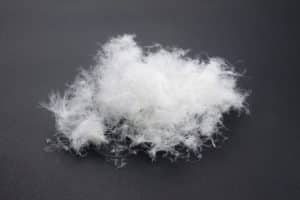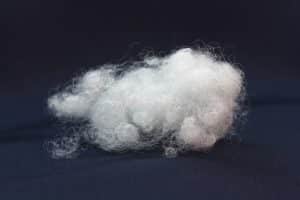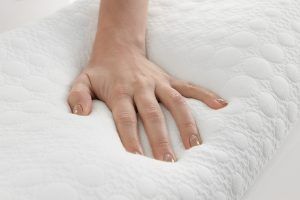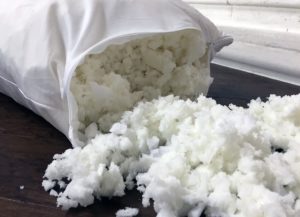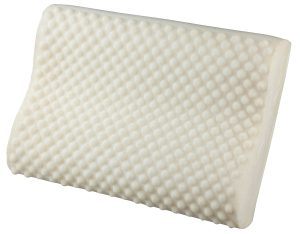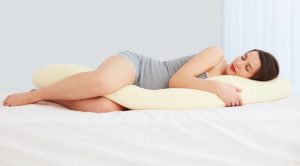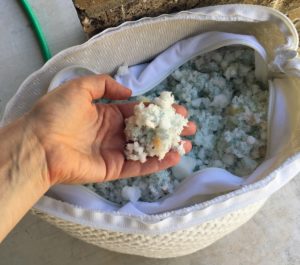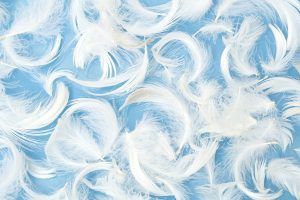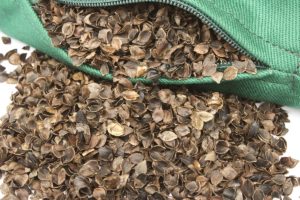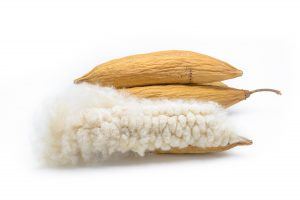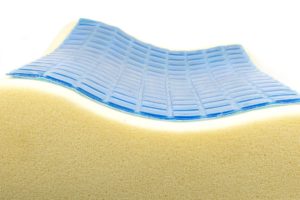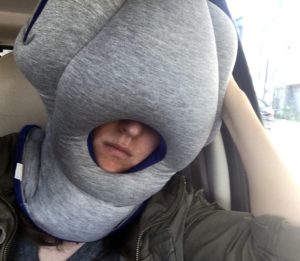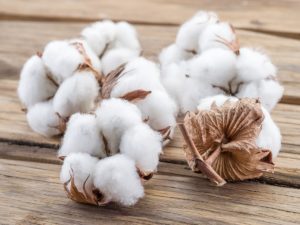Along with a comfortable mattress, pillows are an integral part of a good night’s sleep. Which means that when you find a pillow that feels good, you tend to stick with it, right? Not so fast. Pillows have become more diverse and innovative than ever before. It may be time to put down that old down pillow and pick up one made with a unique filling like buckwheat hulls, kapok fibers, or even gel.
So, if you’re looking to change things up in the bedroom – we’re still talking about pillows, here – we’ve put together 15 different types of pillows and what you should know about each so that you can find the best pillow for you.
15 Types of Pillows
- Down Pillows
- Down Alternative (Synthetic) Pillows
- Memory Foam Pillows
- Shredded Foam Pillows
- Latex Pillows
- Body Pillows
- Adjustable Pillows
- Feather Pillows
- Buckwheat Pillows
- Kapok Fiber Pillows
- Water Pillows
- Gel Pillows
- Microbead Pillows
- Cotton Pillows
- Wool Pillows
15 Types of Pillows Video Review
Check out all these pillows in our video review!
Down
Down is a soft grouping of fibers that lay closest to a bird’s skin and are located primarily near its chest. Down can also sometimes be referred to as the “undercoating” of a bird. Down usually comes from a goose, duck or swan and higher quality down is commonly called European White Goose down or Hungarian Goose down.
Clusters of down fan out from a central point and create a 3D effect. This gives the cluster an insulating quality because they trap air (it’s how they keep the bird warm after all). Many down pillows are also filled with feathers – so keep an eye out for the down to feather ratio of your next down pillow.
Read my review of the eLuxurySupply Hotel White Goose Down pillow.
Pros:
- Lightweight, soft and natural
- Cushiony over firm – good for stomach sleepers
- Insulating and they end to last longer than synthetic alternatives
Cons:
- Some allergies are associated with down and can be on the pricier side
- May be difficult to clean and needs fluffing to keep loft
Down Alternative (Synthetic)
Just like its name, down alternative pillows are made with a synthetic filling – most likely puffs of polyester – that is intended to mimic true down pillows. They can be good for those with down allergies as they are hypoallergenic. They’re also more likely to be cheaper than down pillows.
Down alternatives can also be a good fit for those who are concerned with the potentially unethical nature of the process of manufacturing down pillows and plucking down from birds.
Check out my review of the Five Star Down Alternative pillow.
Pros:
- Good for tighter budget, typically easy to care for
- Still soft and lightweight, as well as hypoallergenic
- Easier to care for than down pillows
Cons:
- Hard to duplicate the insulation (warmth) compared to down
Memory Foam
Memory Foam pillows are made using polyurethane and are also sometimes called visco-elastic. Because they’re created with chemicals they sometimes give off a smell that’s referred to as “off-gassing.”
They’re popular because their density and responsiveness allow your head and neck to be contoured to the pillow while you sleep. When you wake up the pillow should regain its original shape.
People sometimes purchase memory foam pillows that are manufactured into a wedge-like shape to help with health-related sleep issues like acid reflux or GERD.
These pillows can be made in a variety of shapes outside the look of a traditional standard pillow. People tend to like it for the same reasons they like memory foam mattresses – it helps to align your spine and neck.
Pros:
- Good support for pain relief or to assist with other sleep and health issues
- No lumping and can be made into a variety of shapes and sizes
- Contouring to head and neck, and very durable
Cons:
- Off-gassing potential
- One solid piece of foam can cause breathability issues and can be too firm for stomach sleepers
Shredded Memory Foam
Shredded memory foam pillows are an innovative version of memory foam pillows. Different brands will offer different proprietary mixes of shredded foam inside their pillows. The shredded pieces of foam create a more adjustable and flexible feel but with a similar bounce and responsiveness as the memory foam pillow.
You can re-arrange the distribution of the pieces and carve out a place for your head if needed. They tend to provide good firmness and support and could be a good fit for back/side sleepers over stomach sleepers.
Check out the Coop Sleep Goods Shredded Memory Pillow review.
Pros:
- Firmer/Good for back and side sleepers
- Moldable and supportive
- Easier to clean than down
Cons:
- Off-gassing potential
- May flatten out over time and require fluffing
- May be too firm/overstuffed and often take a long time to fully dry
Latex
Latex is actually extracted from a rubber tree called the Hevea-Brasiliensis tree. Latex pillows have become increasingly popular because they have soft and supportive qualities and will last awhile.
Watch out for types of pillows labeled as latex blend pillows, the latter of which may be blended with polyurethane foam. Only pillows labeled as 100% Natural Latex will be polyurethane free.
Pros:
- Soft, supportive, and durable
- Natural Latex pillows will keep its shape and responsiveness but will eventually biodegrade
Cons:
- Can be blended with polyurethane foam and lose durability
- Bad for those with latex allergies and heavy compared to down or synthetic options
- Lacks breathability
Body Pillow
Its name pretty much sums it up – a body pillow is a pillow that supports your entire body. These pillows are typically long and narrow and run the length of your body. They can be used for a variety of reasons but are typically used for comfort, support or pressure relief.
Body pillows seem to be especially popular with pregnant women or people recovering from injuries who need extra support below their head. They can be made with a variety of fillings (including organic and conventional) and firmness levels to meet all needs.
Pros:
- Can help ease specific aches and pains
- Good for expectant mothers and versatile
- Can be made with organic or conventional materials
Cons:
- Tend to be large/take up significant space on the bed
- Can create separation between you and your sleep partner
- Pillowcases can be tricky to get on and off for cleaning
RELATED: Best Pregnancy Pillows of 2025
Adjustable
Adjustable pillows can be made with all types of filling, the common denominator is that you have the ability to add/remove the filling to your desired lift and firmness.
This option is popular with shredded memory foam pillows or other pillows with easily-removable filling. Adjustable pillows provide a way for every type of sleeper to enjoy their pillow.
Check out my review of the Snuggle-Pedic Shredded Memory Foam Pillow.
Pros:
- Good for any type of sleep position and comes in a variety of fillings, shapes, and sizes
Cons:
- Messy and the pillow filling needs to be removed hygienically for optimal use
- Can take a little time to find the right amount of loft; some experimenting may be needed
Feather
Feathers in a feather pillow tend to come from the wing and back feathers of geese or ducks. They are flat and have quills running through them. These differ from “down feathers” because these feathers lay on top of the bird, while down is the protective layer underneath.
Feather pillows can still provide a soft and fluffy feeling but will retain their shape longer than down and will help the pillow keep its shape and firmness since they are larger and more structured than down clusters. Typically, down pillows will contain some feathers in them, so keep a look out for the down to feather ratio in the pillow.
Pros:
- Soft, lightweight, and holds shape
- Firmer/more structure
Cons:
- May sleep hot and flattens easily – needs fluffing
- Allergies may be an issue for some and quills may poke out of the pillow cover and cause irritation
Buckwheat
These pillows are filled with buckwheat hulls, which are the hard outer shell that protects the buckwheat seed. The hulls have a lot of qualities that are useful to bedding. They are breathable, hypoallergenic and conform to the head and neck to help keep the spine aligned. They are becoming increasingly popular but tend to be noisier than your traditional pillow.
Pros:
- Hypoallergenic and allows for air movement
- Natural, supportive, and moldable
Cons:
- The hulls make noise when they rub against each other
- May be too firm for stomach sleepers
- Heavier than other options and the pillow will have a “crunchy” feel
RELATED: ComfySleep Buckwheat Pillow Review
Kapok Fiber
Kapok fibers are actually the seed pod fluff of a rainforest tree called the Ceiba tree. The fibers are naturally buoyant and often used as a natural bedding filling. These fibers are hypoallergenic but can feel similar to that of a down pillow. They are soft, lightweight, and they’ll need to be fluffed on occasion. They should have good loft and maintain their shape as well.
Check out my Brentwood Home Helena Pillow review, which contains a mix of kapok fibers and latex ribbons.
Pros:
- Soft, lightweight, and buoyant
- Creates loft and is hypoallergenic
- Naturally mold and mildew resistant
- Eco-friendly (naturally biodegradable)
Cons:
- Needs to be fluffed
- Inflammable (if it catches on fire it will be difficult to put out)
- Labor invasive to harvest and may be more expensive
Water
True to its name, the water pillow is filled with – you guessed it – water! One of the biggest positives of water pillows is that it will maintain its consistency no matter what pressure is applied to it (compared to a down, synthetic or foam filling).
Pros:
- Anchored to where you are and won’t move around
- Conforms to your neck and head and no fluffing involved
- Can be adjustable if you add/remove water, and also hypoallergenic
Cons:
- Leaks will cause trouble and potentially ruin your mattress
- May be potentially too firm for stomach sleepers
Gel
Similar to the water pillow, gel pillows are filled with gel and help keep the pillow cool, consistent and firm. Gel filling keeps the pillow from flattening, but it can be molded or re-shaped for additional comfort.
It’s not uncommon to see memory foam pillows with a layer of gel around them. They’re often called “gel memory foam pillows” and you get some of the cooling features of gel with the contouring of memory foam.
Pros:
- Do not require shaking or fluffing and easy to care for
- Cool sleeping surface, pressure relieving, and hypo-allergenic
- Can be combined with other fillings like memory foam
Cons:
- May not be a good fit for all sleepers
- You will not “sink” into the pillow like you would a traditional down pillow
Microbead
Microbead pillows are made up of many polystyrene beads. You may be familiar with the microbeads that are commonly found in “U” shaped travel pillows. They tend to have a “squishier” feeling than foam or shredded foam pieces.
Check out my review of the Ostrich Travel Pillow that is filled with microbeads.
Pros:
- Supportive and moldable (you can shift beads to meet your needs)
- Allows for excellent airflow and breathability
Cons:
- Size of the microbeads may vary and not the most eco-friendly option (beads are slow to biodegrade)
- Messy if microbeads escape from their covering
RELATED: Best Travel Pillows of 2025
Cotton
While cotton is a staple in most bedding, it is not often thought of as a pillow filler. In most cases, pillows are stuffed with something other than cotton but covered in an outer cotton fabric.
There are some natural benefits to cotton-filled pillows, especially if you go organic. They’re naturally absorbent and hypoallergenic and feels firmer than down pillows. However, over time the cotton can compress and harden and it may absorb sweat which will make it unhygienic.
Pros:
- Natural and generally hypoallergenic
- Breathable (naturally absorbent)
Cons:
- Needs to be cleaned regularly to avoid dust mites and mold
- May flatten out or get lumpy over time
- Does not contour to the head and neck easily
Wool
Most of us know that wool is a natural fiber grown on sheep. When the wool is sheared off of a sheep, it can be used for a variety of textiles, including acting as a stuffing for the pillow. It is soft and helps regulate body temperature (as it does for sheep).
A wool pillow is very fluffy at first and then settle over time due to compression but this should not affect the support.
Pros:
- Helps regulate body temperature and is eco-friendly (renewable resource)
- Naturally anti-microbial and anti-bacterial
- Natural fire retardant and dust mite resistant
Cons:
- Absorbs odors and needs special care – dry clean only
Images via Shutterstock

